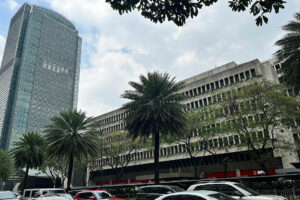




Philippines Trade Update: Exports momentum continues
 DOWNLOAD
DOWNLOAD

Quarterly Economic Growth Release: More BSP cuts to come
 DOWNLOAD
DOWNLOAD

Monthly Economic Update: Fed catches up
 DOWNLOAD
DOWNLOAD


Lenders face higher asset quality risks — Fitch

PHILIPPINE BANKS are facing increasing asset quality risks amid high interest rates, but any deterioration will likely be manageable, Fitch Ratings said on Monday.
“Banks’ asset quality risks are rising due to high inflation and rising interest rates… However, Fitch Ratings expects the sector’s nonperforming loan (NPL) ratio to remain steady at around 3.5% by end-2023, as risks are largely offset by the adequate financial buffers of large corporate borrowers and a supportive economy,” it said in a commentary by its directors Tamma Febrian and Willie Tanoto.
The benchmark policy rate is at a near 16-year high of 6%, after the Bangko Sentral ng Pilipinas (BSP) raised key borrowing rates by 400 basis points (bps) since May 2022.
The banking industry’s bad loan ratio fell to 3.17% at the end of December from 3.35% a month earlier, based on preliminary BSP data. This was also lower than the NPL ratio of 3.97% at the end of 2021, and the lowest since 2.84% in August 2020.
Fitch said large corporate borrowers are in “relatively strong positions to weather higher financing costs.” Corporations make up over three-quarters of Philippine banks’ loan portfolios.
“Earnings buffers are more than sufficient to cover the expected increase in interest expenses for the vast majority of debt among listed corporates,” Fitch said.
Large-borrower concentration is high in the Philippines, which Fitch said heightens the risk of lumpy impairments, especially if there is a protracted economic slowdown.
“Banks exposed to smaller business groups with over-leveraged balance sheets are vulnerable to higher impairment risks. Nevertheless, we expect the supportive economic conditions, robust earnings buffers, and the diversified business and entrenched market positions of conglomerates to support their debt servicing capacity in the near term,” it added.
Fitch estimates the Philippines’ gross domestic product (GDP) to grow by 5.5% in 2023. This is below the government’s 6-7% growth target for this year, and slower than the 7.6% expansion in 2022.
Fitch said most asset quality deterioration is anticipated in micro, small and medium enterprises, as well as the retail sector.
“Buffers have likely eroded amid high inflation and the normalization of credit card interest rates. This is partially mitigated by an unemployment rate that fell to 4.5% by the fourth quarter 2022, which should keep any consumer-loan impairments in the near term manageable,” it added.
The BSP in January raised the monthly interest rate ceiling on credit card charges by 100 bps to 3% from 2%.
The unemployment rate stood at 4.3% in December, higher than November’s 4.2% but lower than 6.6% a year earlier.
Fitch said loan growth would likely ease to 7-9% this year due to the lagged effect of the central bank’s rate hikes.
Data from the central bank showed that bank lending grew slower in December, increasing by 13.4% year on year to PHP 10.9 trillion. This was slower than the revised 13.9% growth in November. — K.B.Ta-asan
This article originally appeared on bworldonline.com





 By BusinessWorld
By BusinessWorld